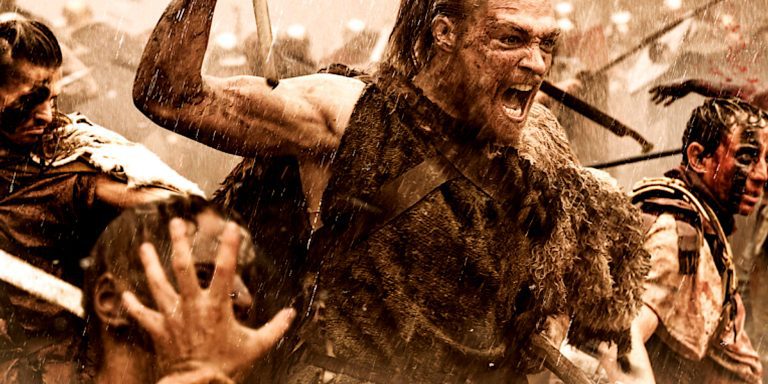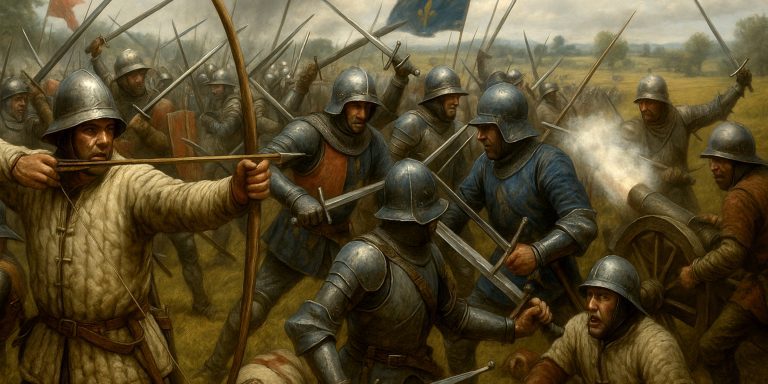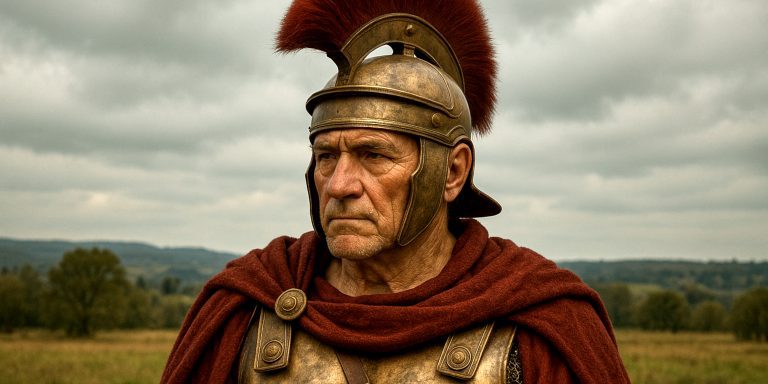
The Combat of the Thirty, or Combat des Trente, was a staged battle fought during the Breton War of Succession, part of the larger Hundred Years’ War. It occurred on 26 March 1351 between thirty knights and squires chosen from each side of the conflict. Though small in scale, the event was widely celebrated for its chivalric nature and was quickly mythologised in both French and Breton tradition.
Historical Background
The Breton War of Succession (1341–1364) was a dynastic conflict between the House of Blois, backed by France, and the House of Montfort, supported by England. Each side sought control over the Duchy of Brittany after the death of Duke John III, who had no direct heirs.
By 1351, the war had stagnated into a series of raids and sieges. The garrisons of Josselin and Ploërmel, held by the French and English respectively, were situated just 15 kilometres apart. Their close proximity and constant skirmishing led to growing frustration, culminating in a proposal to resolve their honour through a formalised combat.
The Combatants
The French side was led by Jean de Beaumanoir, the castellan of Josselin. The English side was commanded by Robert Bemborough (also styled Brandebourch in some sources), the captain of Ploërmel.
Each captain selected thirty fighters. The combatants were all men-at-arms, including knights, squires, and experienced soldiers. While the full rosters are uncertain, both sides included a mixture of French, Breton, English, German, and perhaps even Navarrese participants, highlighting the mercenary nature of medieval warfare.
Rules and Format
This was not an open melee or a battlefield engagement. The combat was structured, pre-agreed, and took place in a field between the two strongholds. Sources suggest the rules permitted the use of a variety of weapons including swords, axes, maces, and lances. Mounted combat was reportedly used in the initial phase, followed by fighting on foot.
Fighters were allowed to leave the field to drink, rest, or tend to wounds before returning. This created a prolonged, exhausting engagement that reportedly lasted for several hours.
Outcome and Casualties
The French-Breton force led by Beaumanoir emerged victorious. Several English combatants, including Bemborough, were killed during the fighting. Beaumanoir himself was seriously wounded but survived, allegedly reviving after drinking water famously brought to him by his comrade Geoffroi du Bois, who is said to have told him, “Drink, Beaumanoir, your blood is flowing out not in.”
The French captured a number of English fighters who were later ransomed, in keeping with the customs of chivalric warfare.
Historical Significance
Despite involving only sixty main combatants, the Combat of the Thirty was seized upon as a rare example of idealised chivalry. Chroniclers, particularly Jean Froissart, recounted the tale as a noble display of valour and honour in a period more often marked by pillage and devastation.
It served propaganda purposes on both sides. For the French, it symbolised loyalty to honour and king. For Bretons, especially those aligned with the House of Blois, it became a source of national pride and a moral victory against the English-backed Montfort faction.
Legacy
The combat was commemorated in songs, poems, and chronicles throughout the late Middle Ages and into the Renaissance. It remained a key moment in French and Breton chivalric memory.
A granite monument stands near the site of the battle, erected in the 19th century to mark what had by then become a legendary event. It is inscribed with the names of the known French combatants.
In modern historiography, the event is recognised not as a major military confrontation but as a cultural and symbolic moment. It illustrates the medieval tension between brutal conflict and the romantic ideal of the knightly class.
Sources and Interpretation
Contemporary sources vary in their details. Froissart’s Chroniques provides the most colourful account, though it is sometimes unreliable due to its romantic tone. Breton and French writers tended to emphasise the chivalric elements, while English chroniclers were more subdued in their coverage.
Modern historians view the combat as a performative spectacle rather than a military necessity. It likely had more to do with morale and image than strategy, offering an outlet for competition and pride during a largely attritional war.
Seven Swords Takeaway
The Combat of the Thirty captures a fleeting moment in history when war briefly took the form of a ritualised display of knightly virtue. Although it had little impact on the outcome of the Breton War of Succession, its enduring fame lies in the way it embodied the ideals of medieval chivalry, ideals that were already fading in the face of gunpowder, mercenary warfare, and prolonged civil strife.



